「着物を着てみたいけれど、帯が難しそう…」そんな風に感じたことはありませんか?特に、豪華で格調高い「袋帯」は、特別な日のためのものというイメージが強く、もっと気軽に和装を楽しみたい人にとっては少しハードルが高いかもしれません。その悩みを解決し、着物ライフを一気に身近にしてくれるのが、今回主役の「名古屋帯」です。
この記事では、名古屋帯がなぜこれほどまでに現代の着物ファンに愛されているのか、その歴史的背景から実用的な使い方までを深く掘り下げていきます。
- 大正時代の働く女性が生んだ?「時短とおしゃれ」を両立した画期的な発明
- 「九寸」と「八寸」は何が違う?帯の格とTPOを決める仕立ての秘密
- 袋帯より下、半幅帯より上。絶妙な「きちんと感」を演出する万能プレーヤー
おしゃれ革命!名古屋帯の誕生
名古屋帯とは、袋帯をより簡単に、そして手軽に締められるように工夫された帯のことです。その名の通り、大正時代に名古屋で考案されたと言われています。一説には、名古屋女学校(現在の名古屋女子大学)の創立者である越原春子女史が、多忙な日々の中で身支度を合理化するために、長くて重い袋帯や丸帯に鋏を入れ、短く軽い帯を考案したのが始まりとされています。
女性の社会進出が進み、より活動的なライフスタイルが求められた大正時代。「もっと手軽に、でもきちんとおしゃれを楽しみたい」という女性たちのニーズに応えたこの発明は、まさに画期的でした。袋帯が背中側で二周させて結ぶ「二重太鼓」を基本とするのに対し、名古屋帯は**一周だけ結ぶ「一重太鼓」**が基本。これにより、帯の長さが短くて済み、軽くて締めやすいという大きなメリットが生まれたのです。
ここが違う!袋帯との見分け方
着物初心者にとって最初の関門ともいえるのが、帯の種類の見分け方です。名古屋帯と、よりフォーマルな袋帯には、明確な違いがあります。
| 項目 | 名古屋帯 | 袋帯 |
| 格(フォーマル度) | カジュアル~セミフォーマル | フォーマル |
| 主な用途 | 普段のお出かけ、観劇、食事会など | 結婚式、式典、パーティーなど |
| 長さ | 約3.6m~3.8m | 約4.2m~4.5m |
| 結び方 | 一重太鼓 | 二重太鼓 |
| 構造(仕立て) | 胴に巻く部分が半幅に仕立てられていることが多い | 全体が同じ幅で、袋状になっている |
最大の見分けるポイントは、その仕立て方です。多くの名古屋帯は「名古屋仕立て」といって、お太鼓(背中の四角い部分)になる部分以外は、あらかじめ幅が半分に折られて縫われています。これにより、体に巻くときに帯を半分に折る手間が省け、すっきりと着付けることができます。一方、袋帯は端から端まで同じ幅の袋状になっているのが特徴です。
コーディネートの幅を広げる多彩な表情
名古屋帯は、その種類の豊富さも大きな魅力です。素材や技法によって、カジュアルなものから、少し改まった席にも使えるものまで、実に多彩な表情を見せてくれます。
代表的なのは、**「九寸名古屋帯」と「八寸名古屋帯」です。これは仕立てる前の生地の幅に由来する名前で、それぞれに特徴があります。また、友禅染めなどで模様を描いた「染め帯」は、季節感あふれる柄や遊び心のあるデザインが多く、趣味性を楽しむのに最適です。一方、色糸を織り込んで模様を作る「織り帯」**は、染め帯に比べて少し格調高い印象を与えます。
この多様性により、名古屋帯は様々な着物とのコーディネートが可能です。
- 普段着に: 小紋、紬、木綿の着物など
- 少しおしゃれしたい時に: 江戸小紋、色無地、付け下げなど
このように、合わせる着物や帯の柄によって、カジュアルダウンも、少しフォーマルアップもできるのが名古屋帯の強みなのです。
現代和装の頼れるパートナー
着物を着る機会が特別な日に限られがちな現代において、名古屋帯が持つ「手軽さ」と「汎用性の高さ」は、着物をより日常的なファッションとして楽しむための重要な要素となっています。
フォーマルな袋帯を締めるほどではないけれど、浴衣に合わせる半幅帯では少しカジュアルすぎる…そんな「ちょうどいい」場面で、名古屋帯は完璧な「きちんと感」を演出してくれます。現代的なデザインや、手入れのしやすい新素材の名古屋帯も次々と登場しており、その存在感はますます高まっています。名古屋帯は、これからも現代の着物ファンの最も頼れるパートナーとして、和装の世界を豊かに彩り続けていくことでしょう。
解説ポイント①:大正時代の働く女性が生んだ?「時短とおしゃれ」を両立した画期的な発明
名古屋帯が生まれた大正時代は、女性の教育機会が拡大し、社会で活躍する女性が増え始めた変革の時代でした。それまでの主流であった「丸帯」や「袋帯」は、非常に長く重く、一人で美しく締めるには時間と労力を要しました。
名古屋帯の考案者とされる名古屋女学校創立者の越原春子女史も、教育者として多忙な日々を送る中で、この身支度の非効率性に疑問を感じていたと言われています。彼女は、**「これからの女性には、活動しやすい合理的な服装が必要だ」**という思想のもと、自ら帯にハサミを入れ、短くても形が整いやすい帯を考案しました。
これは、現代でいう「時短」や「効率化」の発想そのものです。お太鼓の部分の形はしっかりと保ちつつ、胴に巻く部分はあらかじめ半分の幅に縫っておくことで、着付けの手間を大幅に削減。それでいて、見た目の「きちんと感」は損なわない。この「時短」と「おしゃれ」を両立させた画期的な発明が、活動的な大正時代の女性たちの心をつかみ、特に関東大震災後の復興期には、経済的で合理的な帯として爆発的に普及したと言われています。
解説ポイント②:「九寸」と「八寸」は何が違う?帯の格とTPOを決める仕立ての秘密
名古屋帯には、主に「九寸(きゅうすん)名古屋帯」と「八寸(はっすん)名古屋帯」の二種類があります。この名前は、仕立てる前の生地の幅が、鯨尺(和裁で使う単位)で約9寸(約34cm)か、約8寸(約31cm)であることに由来します。この幅の違いが、仕立て方と用途に大きな影響を与えます。
- 九寸名古屋帯
- 特徴: 幅の広い(約9寸)生地の両端を内側に折り込み、帯芯を入れて仕立てます。一般的に「名古屋帯」と言うと、この九寸を指すことが多いです。
- 生地: 帯芯を入れるため、塩瀬やちりめん、綸子といった比較的柔らかく薄い生地が使われます。染めの技法で柄が描かれることが多いです。
- 用途: 普段着から、付け下げや色無地など少し改まった装いまで幅広く使えます。
- 八寸名古屋帯(かがり帯、袋名古屋帯とも)
- 特徴: 幅が約8寸の生地をそのまま使い、帯芯を入れずに両端をかがって仕立てます。
- 生地: 芯を入れない分、綴織(つづれおり)や博多織、紬地など、厚手でしっかりとした生地が使われます。織りの帯が中心です。
- 用途: 芯がなく軽やかなため、よりカジュアルな普段着(紬や小紋)に合わせることが多いです。ただし、金銀糸を使った格調高い綴織の八寸帯などは、例外的に準礼装に用いられることもあります。
このように、帯芯の有無とそれに伴う生地の種類が、二つの帯の主な違いであり、それぞれの得意なTPOを分けているのです。
解説ポイント③:袋帯より下、半幅帯より上。絶妙な「きちんと感」を演出する万能プレーヤー
着物の世界には「格」という、服装のフォーマル度を示すルールがあります。帯も同様で、種類によって格が決まっています。名古屋帯のポジションを理解すると、コーディネートが格段に楽になります。
- 第一礼装・準礼装(最もフォーマル):袋帯
- 結婚式での留袖や振袖、式典での訪問着などに合わせます。二重太鼓で結び、「喜びが重なる」という縁起を担ぎます。
- 街着・普段着(カジュアル~少しよそゆき):名古屋帯
- 友人との食事会、観劇、ショッピングなど、日常のおしゃれシーンで活躍します。小紋や紬に合わせてカジュアルに、色無地や付け下げに合わせれば少しきちんとした印象になります。
- 普段着・浴衣(最もカジュアル):半幅帯
- 文字通り幅が半分の帯で、結び方も多様で最も手軽です。浴衣のほか、木綿やウールの着物など、家庭で楽しむ普段着に合わせます。
このように、名古屋帯は袋帯と半幅帯のちょうど中間に位置する、非常に使い勝手の良い帯なのです。フォーマルすぎる袋帯では大げさになってしまうけれど、半幅帯ではラフすぎる…という、現代のライフスタイルに最も多い「ちょっとしたお出かけ」の場面で、名古屋帯は絶妙な「きちんと感」と「こなれ感」を両立させてくれる、まさに万能プレーヤーと言えるでしょう。
参考文献
- きものレンタリエ. (n.d.). 名古屋帯とは?わかりやすく説明. きもの豆知識. Retrieved from https://kimono-rentalier.jp/column/kimono/nagoyaobitoha/
- レンタル着物岡本. (2024, March 25). 名古屋帯とは?歴史からコーディネート特集まで一気に解説‼️. Retrieved from https://www.okamoto-kimono.com/column/4147
- おお蔵. (2023, May 30). 袋帯と名古屋帯の違いとは!それぞれの特徴や着用時のポイントを押さえておこう. Retrieved from https://www.wb-ookura.com/column/22695/
- ウリエル. (n.d.). 名古屋帯とは?袋帯・半幅帯との違いから買取相場までを解説!. Retrieved from https://www.uriel-cuore.co.jp/column/kimono_nagoyaobi/
- 帯の仕立て屋 みつやま. (2014, January 25). 九寸名古屋帯と八寸袋名古屋帯の違いや見分け方を分かりやすく解説. Retrieved from https://shitate.org/nagoya-or-fukuronagoya/
【English Article】
The Savior of Kimono Life! Why the Nagoya Obi is So Beloved and How It Broadens Your Style
“I want to wear a kimono, but the obi seems so complicated…” Have you ever felt this way? The luxurious and formal “Fukuro Obi,” in particular, often feels reserved for special occasions, creating a slight barrier for those who wish to enjoy Japanese attire more casually. The solution to this dilemma, and the key to making kimono life more accessible, is our star today: the “Nagoya Obi.”
This article delves deep into why the Nagoya Obi is so adored by modern kimono enthusiasts, exploring everything from its historical background to its practical applications.
- Born from the Working Women of the Taishō Era? A Revolutionary Invention Combining “Efficiency and Style”
- What’s the Difference Between “Kyūsun” and “Hassun”? The Secrets of Tailoring That Define Formality and TPO
- Below the Fukuro Obi, Above the Hanhaba Obi: The Versatile Player That Creates the Perfect “Put-Together” Look
A Fashion Revolution! The Birth of the Nagoya Obi
The Nagoya Obi is a type of obi designed to be simpler and easier to tie than the Fukuro Obi. As its name suggests, it is said to have been invented in the city of Nagoya during the Taishō era (1912-1926). One theory holds that it was created by Haruko Koshihara, the founder of the Nagoya Girls’ School (now Nagoya Women’s University). To streamline her own busy life, she took scissors to the long, heavy Fukuro and Maru obi of the time, inventing a shorter, lighter version.
The Taishō era was a time of transformation, with increasing opportunities for women in society and a demand for more active lifestyles. This invention, which catered to the need to “enjoy fashion easily but properly,” was truly revolutionary. While the Fukuro Obi is typically tied in a “Nijū Daiko” (double-layer bow) that wraps around the back twice, the Nagoya Obi’s standard is the “Ichijū Daiko” (single-layer bow), which wraps around only once. This innovation resulted in a shorter, lighter, and easier-to-tie obi.
Key Differences: How to Tell It Apart from a Fukuro Obi
For kimono beginners, distinguishing between different types of obi can be a first hurdle. The Nagoya Obi and the more formal Fukuro Obi have clear distinctions.
| Category | Nagoya Obi | Fukuro Obi |
| Formality | Casual to Semi-formal | Formal |
| Main Use | Everyday outings, theater, dining | Weddings, ceremonies, parties |
| Length | Approx. 3.6m – 3.8m | Approx. 4.2m – 4.5m |
| Tying Style | Ichijū Daiko (Single bow) | Nijū Daiko (Double bow) |
| Structure | The part wrapped around the torso is often tailored to half-width | The entire length is a consistent width, like a bag |
The most significant distinguishing feature is its tailoring. Most Nagoya Obi are made with a “Nagoya仕立て” (Nagoya tailoring), where the section that doesn’t form the otaiko (the square bow at the back) is pre-folded and sewn to half its width. This eliminates the need to fold the obi in half while wrapping it around the body, allowing for a neater fit. In contrast, a Fukuro Obi has a consistent, bag-like width from end to end.
A Spectrum of Styles for Versatile Coordination
A major appeal of the Nagoya Obi is its vast variety. Depending on the material and technique, it can range from very casual to suitable for slightly more formal occasions.
The main types are the “Kyūsun Nagoya Obi” and the “Hassun Nagoya Obi,” named after the pre-tailored width of the fabric. Additionally, “Some Obi” (dyed obi), featuring patterns painted with techniques like Yūzen dyeing, often showcase seasonal motifs and playful designs, perfect for expressing personal taste. On the other hand, “Ori Obi” (woven obi), where patterns are created by weaving colored threads, tend to have a slightly more formal feel than dyed obi.
This diversity allows the Nagoya Obi to be coordinated with a wide range of kimonos:
- For everyday wear: Komon, Tsumugi, cotton kimonos
- For a slightly dressier look: Edo Komon, Iromuji, Tsukusage
The Nagoya Obi’s strength lies in its ability to be dressed down or up depending on the kimono and the obi’s pattern.
The Reliable Partner of Modern Kimono Style
In an age where wearing a kimono is often reserved for special days, the “ease of use” and “versatility” of the Nagoya Obi are crucial for enjoying kimonos as a part of everyday fashion.
For those moments when a formal Fukuro Obi feels too elaborate, yet a casual Hanhaba Obi (for yukata) seems too informal, the Nagoya Obi provides the perfect touch of “put-togetherness.” With the continuous emergence of contemporary designs and new, easy-care materials, its presence is only growing. The Nagoya Obi will undoubtedly continue to be the most reliable partner for modern kimono fans, richly coloring the world of Japanese attire.
Analysis Point ①: Born from the Working Women of the Taishō Era? A Revolutionary Invention Combining “Efficiency and Style”
The Taishō era, when the Nagoya Obi was born, was an age of change where educational opportunities for women expanded and more women began to play active roles in society. The mainstream obi of the time, the “Maru Obi” and “Fukuro Obi,” were extremely long and heavy, requiring significant time and effort to tie beautifully by oneself.
Haruko Koshihara, the founder of Nagoya Girls’ School and credited as the inventor of the Nagoya Obi, was said to have questioned this inefficiency in her busy life as an educator. Based on the philosophy that “future women need practical and rational clothing to be active,” she took scissors to her own obi and devised one that was shorter yet still held its shape.
This concept is the very essence of modern “efficiency” and “time-saving.” By keeping the shape of the otaiko bow intact while pre-sewing the torso section to half-width, she drastically reduced the effort of dressing. Yet, it did not compromise the “put-together” appearance. This revolutionary invention that balanced “efficiency” and “style” captured the hearts of active Taishō-era women. It is said to have become explosively popular, especially during the reconstruction period after the Great Kantō Earthquake, as an economical and rational choice.
Analysis Point ②: What’s the Difference Between “Kyūsun” and “Hassun”? The Secrets of Tailoring That Define Formality and TPO
Nagoya Obi mainly come in two types: “Kyūsun (9-sun) Nagoya Obi” and “Hassun (8-sun) Nagoya Obi.” The names derive from the pre-tailored width of the fabric in kujira-jaku (a traditional Japanese unit of measurement), being either about 9 sun (approx. 34 cm) or 8 sun (approx. 31 cm). This difference in width significantly impacts the tailoring method and use.
- Kyūsun Nagoya Obi
- Features: Made from a wider (approx. 9-sun) fabric, the edges are folded inward, and an obi core (obi-shin) is inserted. When people generally refer to a “Nagoya Obi,” they are often talking about this Kyūsun type.
- Fabric: Because a core is used, the outer fabric is often relatively soft and thin, such as shioze, chirimen, or rinzu silk. Patterns are often created using dyeing techniques.
- Use: Versatile, for everything from everyday wear to slightly more formal attire like tsukesage or iromuji.
- Hassun Nagoya Obi (also called Kagari Obi or Fukuro Nagoya Obi)
- Features: Made from an 8-sun-wide fabric, it is tailored without an obi core by simply hemming the edges.
- Fabric: Since there is no core, the fabric itself is thick and sturdy, such as Tsuzure-ori (tapestry weave), Hakata-ori, or Tsumugi (pongee). It is primarily a woven obi.
- Use: Being lighter and without a core, it is often paired with more casual, everyday kimonos (like Tsumugi or Komon). However, a high-formality Tsuzure-ori Hassun Obi with gold and silver threads is an exception and can be used for semi-formal wear.
Thus, the presence or absence of a core and the corresponding fabric type are the main differences between the two, determining their respective TPOs (Time, Place, Occasion).
Analysis Point ③: Below the Fukuro Obi, Above the Hanhaba Obi: The Versatile Player That Creates the Perfect “Put-Together” Look
The world of kimono has a concept of “kaku,” or formality level. Obi also have formality levels based on their type. Understanding the Nagoya Obi’s position makes coordination much easier.
- Most Formal (Dai-ichi Reisō / Jun-reisō):Fukuro Obi
- Paired with Tomesode or Furisode for weddings, and Hōmongi for ceremonies. Tied in a “Nijū Daiko” (double bow), symbolizing “the layering of joy.”
- Casual to Semi-formal (Machigi / Fudangi):Nagoya Obi
- Shines in everyday fashion scenes like dining with friends, going to the theater, or shopping. It can be casual with a Komon or Tsumugi, or slightly more formal with an Iromuji or Tsukesage.
- Most Casual (Fudangi / Yukata):Hanhaba Obi
- Literally “half-width obi,” it’s the easiest to tie with various styles. Used for yukata and everyday kimonos for at-home wear, like cotton or wool.
The Nagoya Obi is positioned perfectly between the Fukuro Obi and the Hanhaba Obi, making it incredibly versatile. For outings where a Fukuro Obi would be too much but a Hanhaba Obi too informal—the most common scenarios in modern life—the Nagoya Obi provides a perfect balance of “put-togetherness” and “effortless style.” It is truly a versatile player in the world of kimono.
References
- Kimono Rentalier. (n.d.). Nagoya Obi to wa? Wakariyasuku setsumei. Kimono Mamechishiki. Retrieved from https://kimono-rentalier.jp/column/kimono/nagoyaobitoha/
- Rental Kimono Okamoto. (2024, March 25). Nagoya Obi to wa? Rekishi kara kōdinēto tokushū made ikki ni kaisetsu‼️. Retrieved from https://www.okamoto-kimono.com/column/4147
- Okura. (2023, May 30). Fukuro Obi to Nagoya Obi no chigai to wa! Sorezore no tokuchō ya chakuyōji no pointo o osaete okō. Retrieved from https://www.wb-ookura.com/column/22695/
- Uriel. (n.d.). Nagoya Obi to wa? Fukuro Obi, Hanhaba Obi to no chigai kara kaitori sōba made o kaisetsu!. Retrieved from https://www.uriel-cuore.co.jp/column/kimono_nagoyaobi/
- Obi no Shitateya Mitsuyama. (2014, January 25). Kyūsun Nagoya Obi to Hassun Fukuro Nagoya Obi no chigai ya miwakekata o wakariyasuku kaisetsu. Retrieved from https://shitate.org/nagoya-or-fukuronagoya/

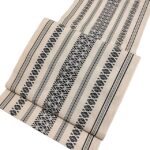
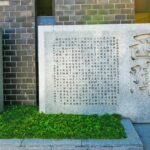
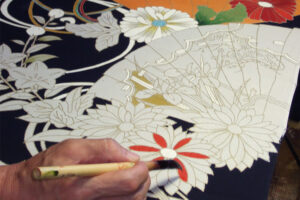
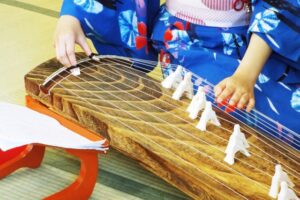
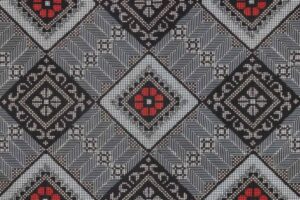
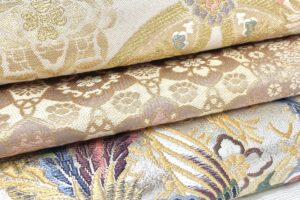

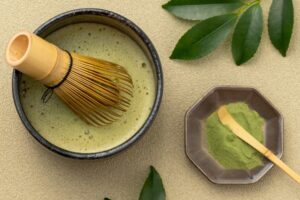

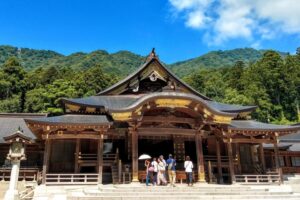
コメントを残す